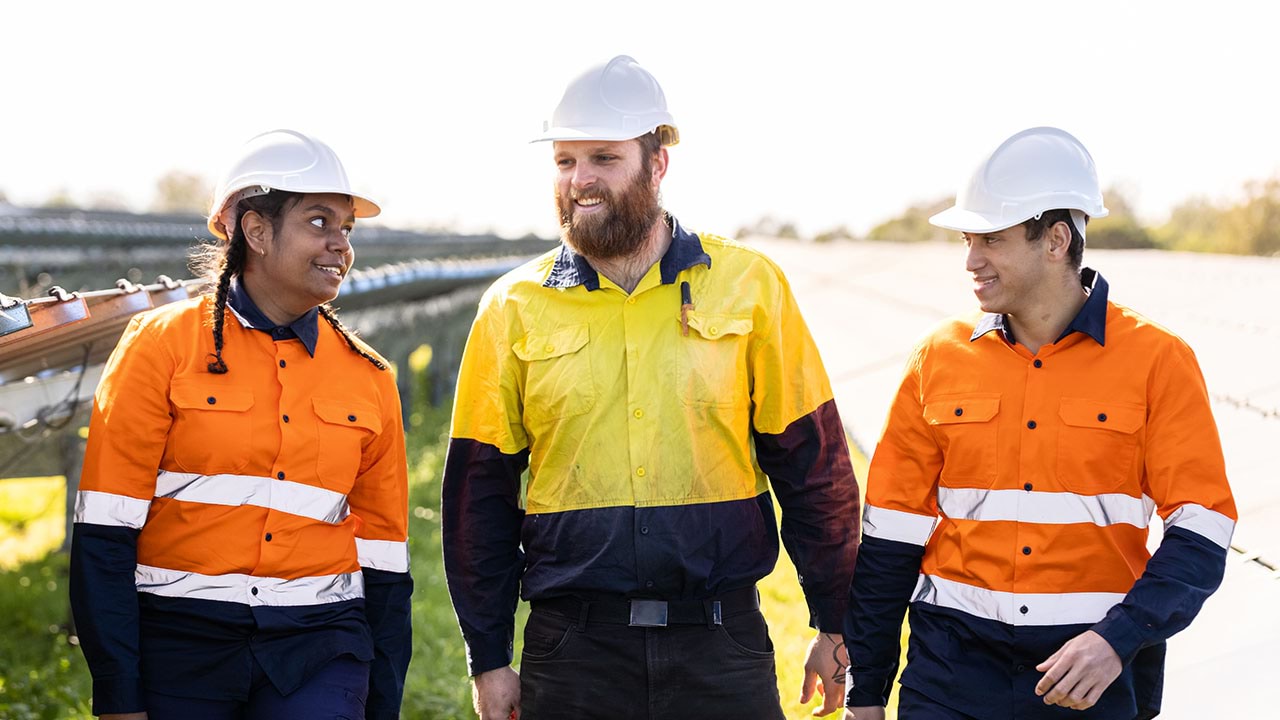Disability support workers support people with disabilities in their day to day activities. They are in high demand across the state.
Find out what a disability support worker does and the related Vocational Education and Training (VET) courses and pathways you can take to secure a job.
What is a disability support worker?
Disability support workers care for adults or children with disabilities. You may care for individuals in their own homes, or in a care facility. You’ll offer companionship and emotional support, and help them connect with others. You may also take them on outings, and you’ll help with their personal care needs.
If you are supporting them in their home, you may help with tasks like shopping, cleaning and meal preparation.
Find out more about disability support workers(opens in a new window) and these related jobs on the Victorian Skills Gateway(opens in a new window):
- child or youth residential care assistant(opens in a new window)
- community worker(opens in a new window)
- counsellor(opens in a new window)
- disabilities services officer(opens in a new window)
- disability services program manager(opens in a new window)
- diversional therapist(opens in a new window)
- family support worker(opens in a new window)
- residential care officer(opens in a new window)
- social worker(opens in a new window)
- welfare centre manager(opens in a new window)
- welfare worker(opens in a new window)
- youth worker(opens in a new window).
Related training courses
Explore these related TAFE and training courses on the Victorian Skills Gateway(opens in a new window):
You may be eligible for government funding to help pay for your course.
Median salary
The median weekly earnings for aged and disabled carers in Australia is $1,564.
Source: Jobs and Skills Australia(opens in a new window)
Note this salary is current as of January 2025 and is indicative only. A range of salaries apply to different roles across the industry.
Job demand in Victoria
Below are the employment forecasts for aged and disabled carer jobs in Victoria. Figures show the number of workers in 2024 and the new workers expected to enter the workforce by 2027 and 2034.
‘New workers expected’ accounts for workers adding new jobs to the economy and replacing retirees over the next 3 and 10 years. These projections are estimates only. There will be additional jobs available as people move between jobs and industries.
Specific data is not available for disability support workers.
| Region | Workers 2024 | New workers expected by 2027 | New workers expected by 2034 |
|---|---|---|---|
| Victoria | 69,888 | 13,167 | 47,962 |
| Melbourne – inner metropolitan | 3,886 | 828 | 2,842 |
| Melbourne – inner south-east metropolitan | 5,530 | 946 | 3,353 |
| Melbourne – southern metropolitan | 10,824 | 1,990 | 7,223 |
| Melbourne – northern metropolitan | 9,464 | 1,951 | 7,350 |
| Melbourne – eastern metropolitan | 9,497 | 1,660 | 6,048 |
| Melbourne – western metropolitan | 6,968 | 1,627 | 6,000 |
| Ballarat and surrounds (Central Highlands) | 2,831 | 520 | 1,883 |
| Bendigo, Echuca and surrounds (Loddon Campaspe) | 3,718 | 664 | 2,431 |
| Geelong, Colac and surrounds (Barwon) | 5,574 | 1,102 | 4,108 |
| Gippsland | 3,861 | 673 | 2,503 |
| Horsham and surrounds (Wimmera Southern Mallee) | 849 | 125 | 419 |
| Mildura, Swan Hill and surrounds (Mallee) | 1,587 | 232 | 776 |
| Shepparton, Seymour and surrounds (Goulburn) | 1,639 | 266 | 977 |
| Wangaratta, Wodonga and surrounds (Ovens Murray) | 1,694 | 280 | 1,038 |
| Warrnambool, Hamilton and surrounds (Great South Coast) | 1,967 | 302 | 1,012 |
Source: Victorian Skills Authority Employment Projections Dashboard
Resources to plan your next steps
Visit our community services industry profile to find out about:
- what it’s like to work in community services, and some of the jobs you could do
- training and skills to work in the industry, and financial assistance to help pay for your course
- help getting a job in community services, and industry job projections for Victoria
- other free resources and advice to plan your training and career.
Explore growing industries in your region
Updated



